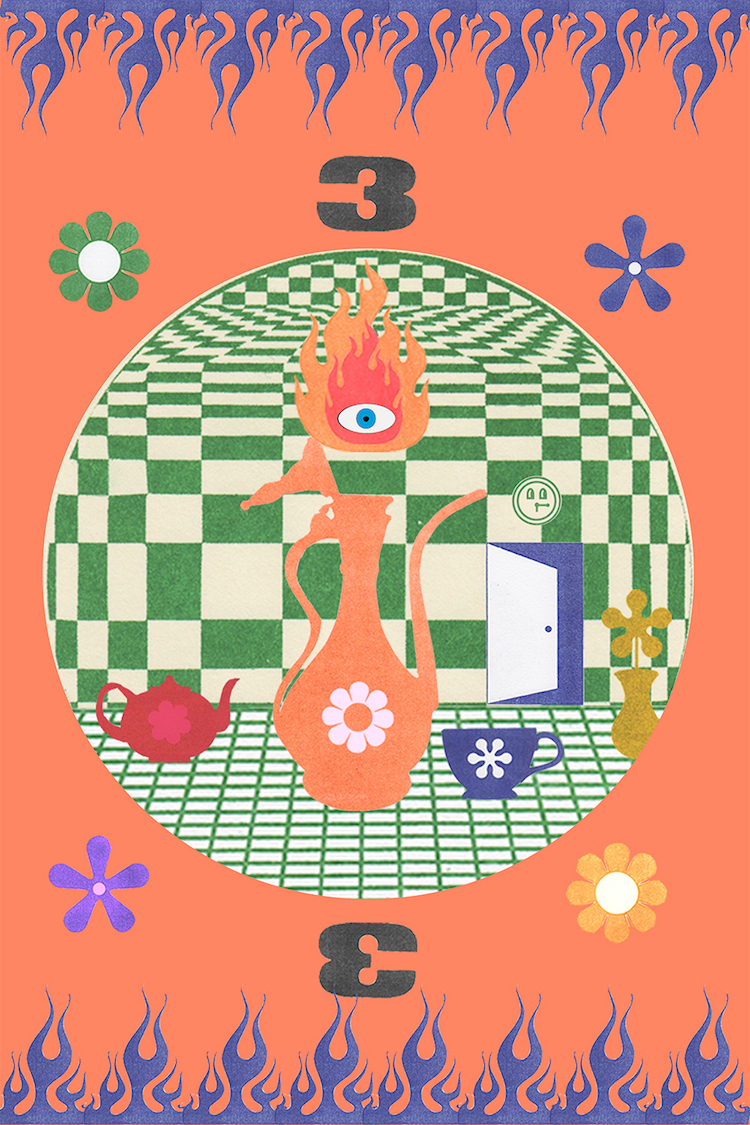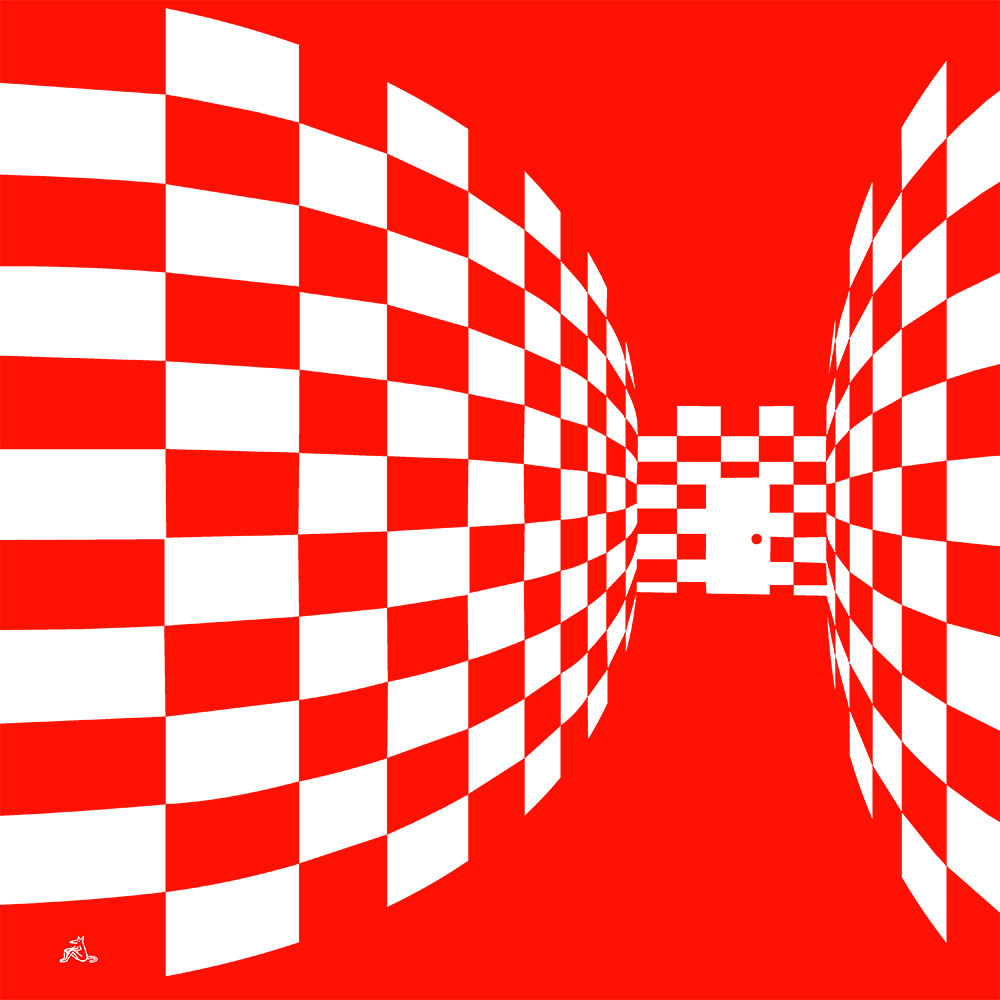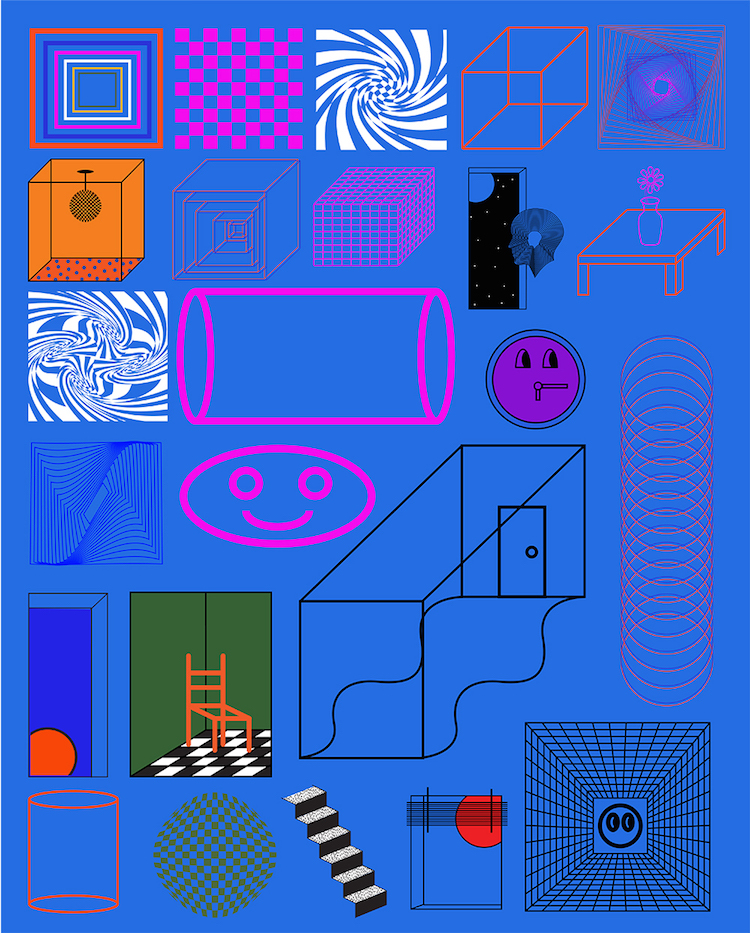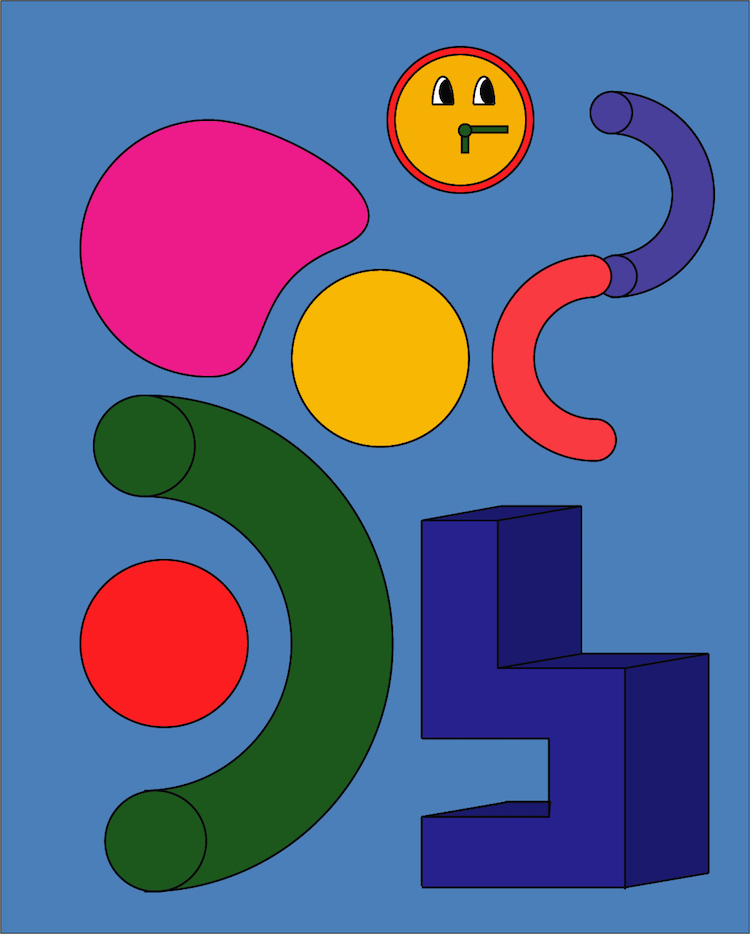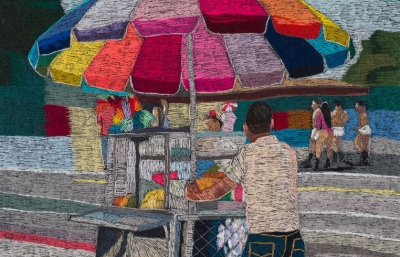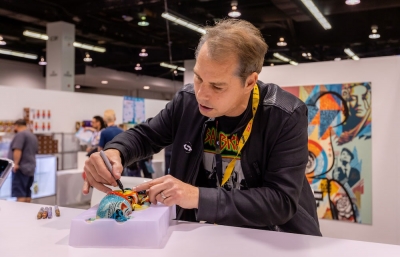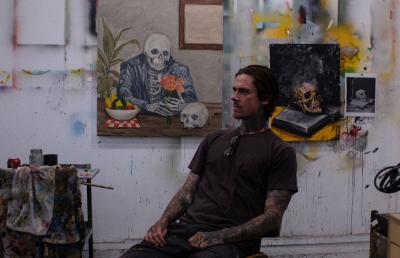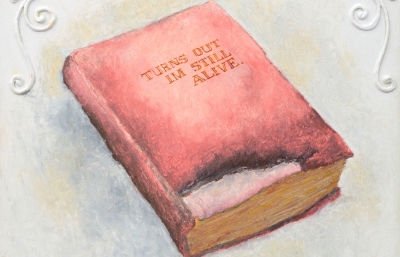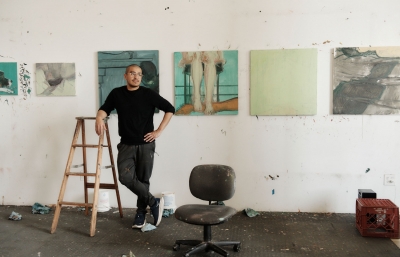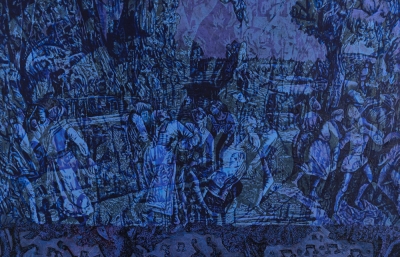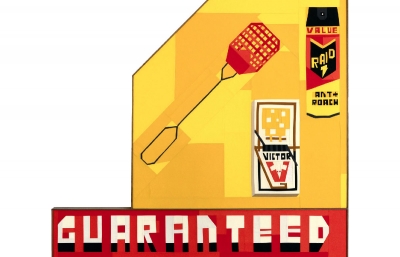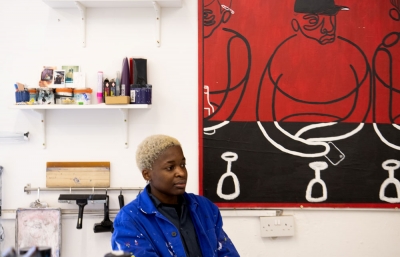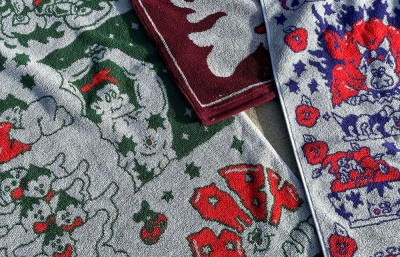One can be called a designer simply because their overall aesthetic is so finely executed it is often imitated but never truly duplicated. Rewina Beshue exudes a certain swag, whether modeling, drawing or designing. An original San Franciscan, she is rare in a town of transplants, absorbing the layers of creative legacies throughout her young life, and emerging as a designer whose work abstracts and skews perception with radiant, positive energy.
Kristin Farr: Your initials are RGB. Artistic destiny.
Rewina Beshue: My middle name is Giday; it's my dad's name. It's a funny coincidence, right?
What are all the creative outlets you're into?
My favorite creative outlet is making patterns. I like to come home after work, sit at my desk, and make endless amounts of patterns. It helps me organize my thoughts and create the work I do today. I also read that making patterns has brain activity benefits. It exercises the brain!
Another one of my creative outlets is walking around the city with my earphones, listening to music or podcasts. I like to walk around and observe spaces and daily life.

What parts of your younger years influenced the work you make now?
I was born and raised in the Fillmore district of San Francisco, and I'm so grateful for that; the Fillmore still is my favorite neighborhood. A lot of things have changed, people of color have been displaced and moved out of the city, and now the Fillmore has become more of a tourist hang-out neighborhood; but I still feel so nostalgic every time I walk around there. I grew up with a lot of neighborhood kids. My parents always trusted my siblings and me to hang around the neighborhood on our own, so I had a lot of freedom at a young age. Riding the bus, going to candy stores, hanging outside the movie theaters in Japantown, etc. A lot of my work is based on my memory and experiences that I have from wandering around the city.
Did your family support your creative nature?
My family has always encouraged my creativity for as long as I can remember. When I was really young, my mom and I would doodle in the kitchen. She would play this game where she would draw something, and I would recreate the drawing. I would get so frustrated because my interpretation of her drawings were so different. I think that's when I started to learn about perceptionalism art and personal style, which are big themes for me. She would see me get frustrated and encourage me to just draw things how I see them. Thanks, mom.
Many people who grew up in SF have this thing about MUNI. Besides being necessary transport, it seems to show up as an art reference. Why do you think that is?
It's kind of hard to explain the connection, but I would say that MUNI is a very symbolic and nostalgic thing for SF natives. It represents memories and coming-of-age in the city. Tapping into those earlier memories connects us back to how SF used to be. Growing up on the MUNI, you witness so many things at an early age, which creates so many memories. When the city is changing so rapidly, all you really have are those memories. Also, the MUNI logo is genius.

What are some visions you most often reference in your work?
I tend to reference places that I make up in my mind. A lot of my work stems from my experiences and memories, but in a very abstract and exaggerated way. Kind of like daydreaming; using your imagination and creativity to enhance your thoughts.
What are some oppositions you've experienced in life that show up in your visual production?
I have a faulty short term memory that has always caused minor issues in my life and can be pretty embarrassing. I remember being in elementary school and getting my report cards back, my teacher would always leave a note at the end saying that I was, "Spacey and need to pay more attention.” But, actually, it has nothing to do with my attention span. It used to frustrate me when I was younger because I felt like people didn't understand. As I got older, I've learned to channel those frustrations into my work. My work has a lot to do with perceptionalism; meaning how one visually interprets their experiences from an abstract perspective. I experience or visualize things in my daily life and recreate them how I choose to see it in my mind. Hopefully that makes sense.
How did school help you as a creator?
School helped me with the rules and mechanics of design. It whipped me into shape for the "professional world," but it was a bit limiting on the creative side. In my experience, I was kinda restricted from being overly creative because my professors thought it didn't make sense, or it didn't follow the rules of design. So I would always challenge them by experimenting and bending rules. Some of my professors were into it, and some of them hated it, but it taught me a lot about creatively challenging people and myself. It was fun to hear why they didn't understand my work and gave me a space to talk about it and really break it down.

You've got a solid graphic design, digital illustration, and animation portfolio—what medium are you most heavily into lately?
I've been trying to explore many more mediums these days, but I still stick with digital pretty heavy. I love using programs to create shapes and optical illusions. The amount of designs I create digitally is endless. I have been exploring printmaking as well.
You've often said there are things you make that you don't show anyone, but you might show them soon... maybe now's the time?
Yes! As I mentioned before, I love to make patterns. If I were to put my entire body of my work together, you could see that much of it is not illustration, but actually, pattern designs. I love making distorted optical illusions. I want to get more into printmaking and large-scale work. I have so many ideas for creating interactive physical spaces using these patterns.
You were born in the '90s but seem drawn to the '80s. What do you love about that aesthetic?
I love the abstract and experimental design of the '80s. Furniture design, digital design... it was all so innovative. Peter Shire's work is a great example, and someone I really love to reference. I love his absurdist art.

Who are your closest collaborators?
My closest collaborators are for sure my friends and people in my community. It's so fun to bounce around ideas with people I share interests with, even friends who have an opposite creative eye from me. It's so satisfying to see both our styles come together. The latest satisfying collab I did was with Alex Shen from Lower Grand Radio. We collaborated on two amazing designs for Club Chai's Third Year anniversary.
List your current obsessions...
A friend gave me a book called Can You Believe Your Eyes, by Richard Block and Harold Yuker. It's a really amazing book about optical illusions and visual tests.
I can't stop watching the Little L music video by Jamiroquai... I project it in my room every day after work... I don't know why.
Akiyoshi Kitaoka, a professor who studies psychology and neural activity. He makes amazing optical illusion designs to test brain activity.
The color green. I keep subconsciously buying green clothing. I just realized it the other day.

